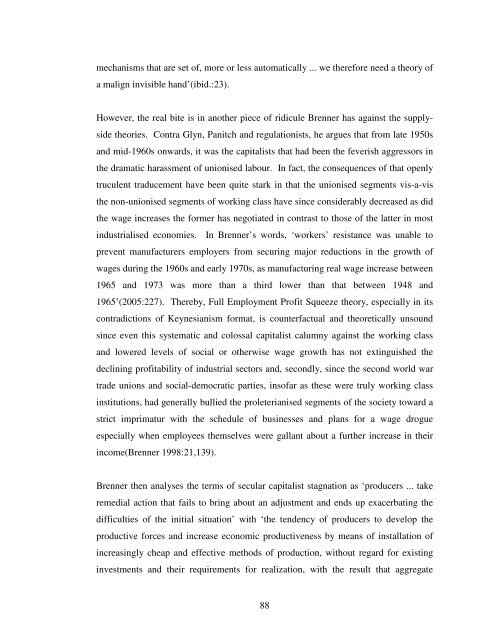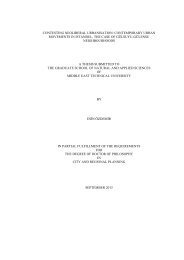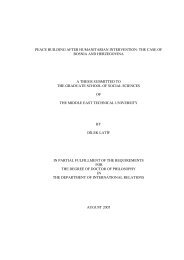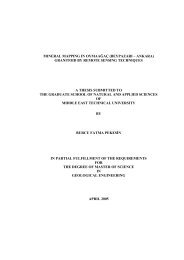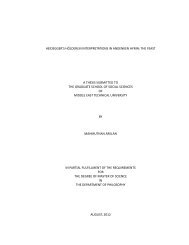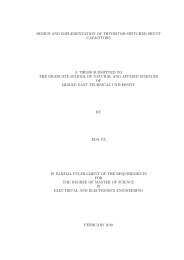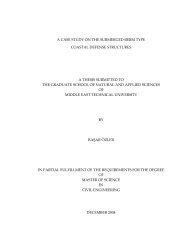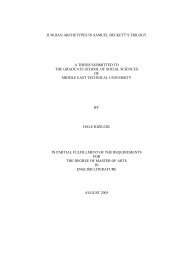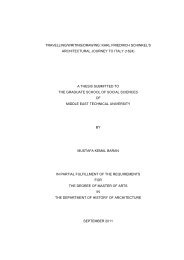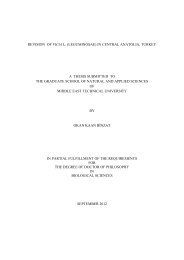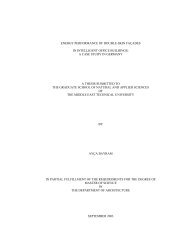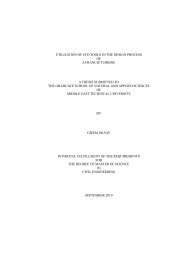View Original - Middle East Technical University
View Original - Middle East Technical University
View Original - Middle East Technical University
Create successful ePaper yourself
Turn your PDF publications into a flip-book with our unique Google optimized e-Paper software.
mechanisms that are set of, more or less automatically ... we therefore need a theory of<br />
a malign invisible hand’(ibid.:23).<br />
However, the real bite is in another piece of ridicule Brenner has against the supply-<br />
side theories. Contra Glyn, Panitch and regulationists, he argues that from late 1950s<br />
and mid-1960s onwards, it was the capitalists that had been the feverish aggressors in<br />
the dramatic harassment of unionised labour. In fact, the consequences of that openly<br />
truculent traducement have been quite stark in that the unionised segments vis-a-vis<br />
the non-unionised segments of working class have since considerably decreased as did<br />
the wage increases the former has negotiated in contrast to those of the latter in most<br />
industrialised economies. In Brenner’s words, ‘workers’ resistance was unable to<br />
prevent manufacturers employers from securing major reductions in the growth of<br />
wages during the 1960s and early 1970s, as manufacturing real wage increase between<br />
1965 and 1973 was more than a third lower than that between 1948 and<br />
1965’(2005:227). Thereby, Full Employment Profit Squeeze theory, especially in its<br />
contradictions of Keynesianism format, is counterfactual and theoretically unsound<br />
since even this systematic and colossal capitalist calumny against the working class<br />
and lowered levels of social or otherwise wage growth has not extinguished the<br />
declining profitability of industrial sectors and, secondly, since the second world war<br />
trade unions and social-democratic parties, insofar as these were truly working class<br />
institutions, had generally bullied the proleterianised segments of the society toward a<br />
strict imprimatur with the schedule of businesses and plans for a wage drogue<br />
especially when employees themselves were gallant about a further increase in their<br />
income(Brenner 1998:21,139).<br />
Brenner then analyses the terms of secular capitalist stagnation as ‘producers ... take<br />
remedial action that fails to bring about an adjustment and ends up exacerbating the<br />
difficulties of the initial situation’ with ‘the tendency of producers to develop the<br />
productive forces and increase economic productiveness by means of installation of<br />
increasingly cheap and effective methods of production, without regard for existing<br />
investments and their requirements for realization, with the result that aggregate<br />
88


